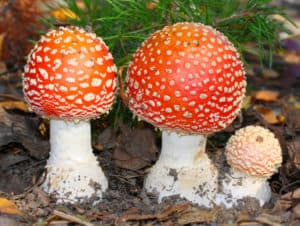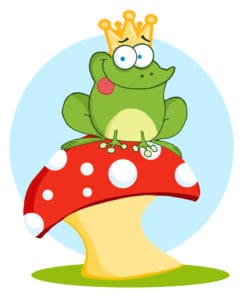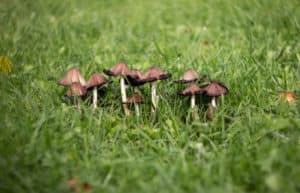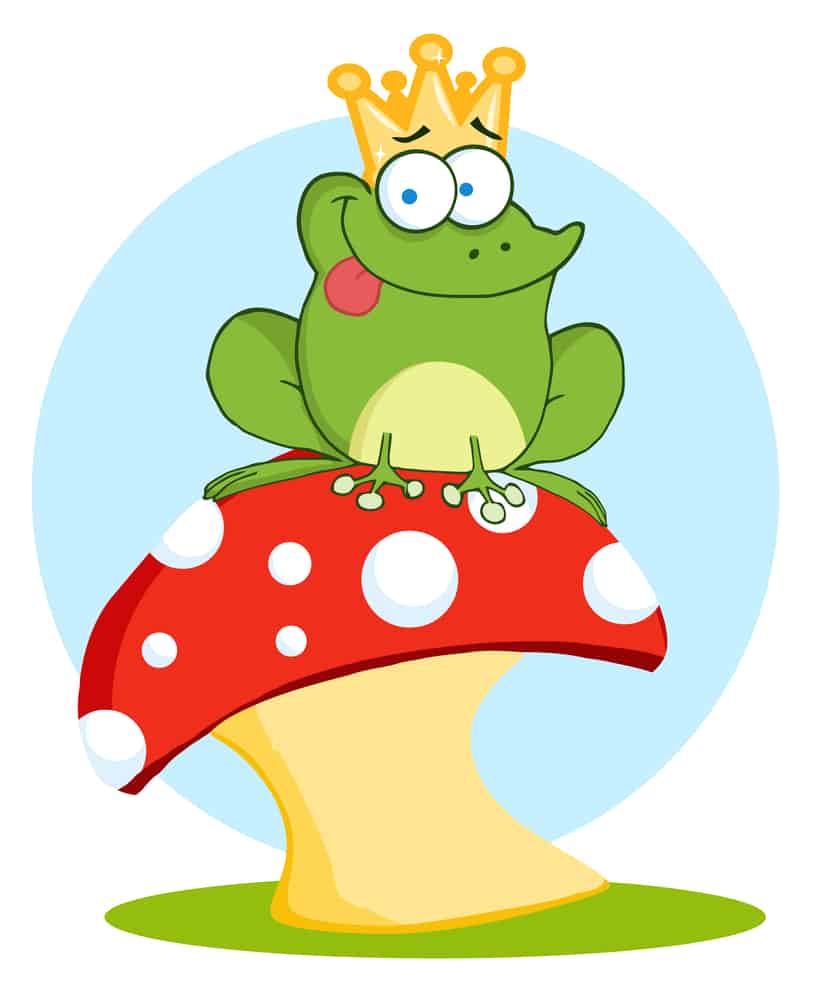The Truth About Toadstools
Toadstools appear in folk stories, literature, and news publications and have for hundreds of years. What is a toadstool, though? And, are they harmful to people or pets?
The answer is a bit complicated. The original use of the word is not the same as how we use it now. To understand entirely, we need to dive into history a little bit.

What are toadstools?
When they hear the word toadstool, most people conjure up images from literature that depict a bright red or yellow umbrella-shaped mushroom with white specks that are deadly to eat.
The mushroom illustrated is most commonly the Fly Agaric (Amanita muscaria), a very poisonous specimen.
The use and depiction of toadstools in media imply that all poisonous mushrooms look a certain way. This is a dangerous way to think, as one of the most deadly mushrooms, the death cap, is all white – not colorful at all. No one trait determines a mushroom’s toxicity.
According to the Merriam Webster dictionary, the word toadstool refers to any mushroom with an umbrella-shaped cap, especially those that are poisonous.
This encompasses a lot of mushrooms! Umbrella-shaped caps are quite common in the fungi kingdom. Some are poisonous and some aren’t.
Where does the name toadstool originate?
The word toadstool originated around the 17th century in England. In folk and fairy tales, toads often carried diseases and were depicted perched on top of a mushroom. A toadstool was a mushroom that a toad sat on, in the story.
Because of the association of toads with disease, it is believed that any mushroom it sat on also became diseased, or poisonous.
 What does the word toadstool mean now?
What does the word toadstool mean now?
Mycological societies and literature sources around the world use the word toadstool interchangeably with mushroom. And, many people still use the word as a catch-all for colorful poisonous mushrooms.
However, this non-specific word doesn’t take into account poisonous mushrooms that are white or generally not eye-catching, colorful mushrooms that aren’t poisonous, or the fact that not all poisonous mushrooms are umbrella-shaped. The fungi world does not make things that easy!
Are toadstools harmful to my pets?
It depends. Most mushrooms sprouting up in a yard are not harmful, yet some are quite dangerous. To know if a specific mushroom is harmful to a cat or dog, the mushroom has to be identified.
As mentioned above, not all so-called toadstools are poisonous, since the term does not refer to one type of mushroom. Most colorful Amanita mushrooms are poisonous, but not all of them.
Wine cap mushrooms are deep burgundy, umbrella-shaped, a choice edible, and definitely not deadly. If you see your pet eating a mushroom, collect as much of it as you can so it can be identified.
Call poison control or the local vet, and a local mycology association, if there is one.

Are toadstools harmful to my lawn?
Toadstools, and mushrooms in general, are not harmful to a lawn. You may not like the look of them or be worried that a pet or child will accidentally eat them, but they are causing no harm to the grass.
In fact, mushroom growth is a sign of a healthy lawn. The soil is nutritious enough to support their growth, and the toadstools provide valuable nutrition back to the soil.
How do I remove toadstools from my lawn?
Removing toadstools from a lawn is complicated because the mycelium or “roots” that they sprout from are underground. You’d have to dig up the entire lawn to get rid of it.
Fungicides don’t work for the same reason. Frequent mowing helps, though it doesn’t get rid of them entirely. They may sprout up again next year. Removing excess thatch also helps.
The toadstools can be picked individually and removed. Don’t put them in the compost, though, as you may just end up relocating the problem. Toadstools are a temporary problem since they don’t live forever, so you can also wait them out.
If you see toadstools growing in your yard, don’t panic. Identify them first to determine if they are harmful. Then, remove them if desired or let them be, and they’ll die off in a few days or weeks.




